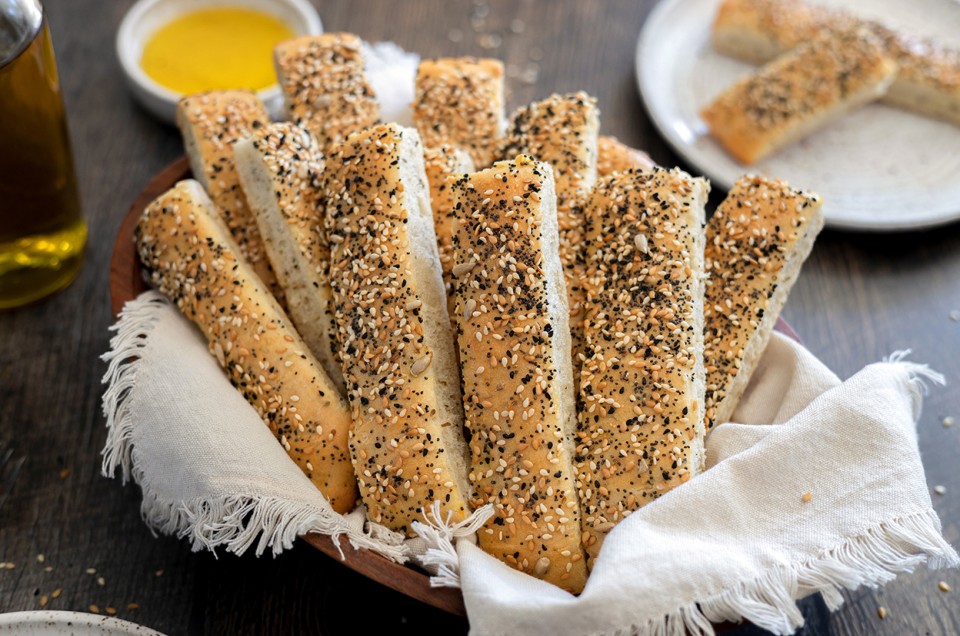


How do we come up with new recipes in the King Arthur test kitchen?
I can tell you one thing: it's a group effort.
And a total labor of love.
Let's start with the group effort.
Meet three of our recipe developers.
Charlotte (l) develops our Baker's Catalogue recipes; Frank (center) helps formulate mixes, and develops recipes for our supermarket products (think self-rising flour, gluten-free flour, our new baking mix, etc.); and Gwen (r) comes up with a lot of the Baking Sheet recipes enjoyed by those of you who subscribe to our print newsletter.
There's also Susan, our Baking Sheet editor; Andrea and Sue who, with Frank, form our flour division's new products team; and our bloggers, MaryJane and Amy.
Oh, and me. That makes nine of us coming up with new recipes. So yes, the kitchen can get pretty crowded at times.
But that's where the love comes in.
We love what we're doing. We love who we're doing it with, and we LOVE collaborating: with one another, and with our fellow employee-owners who "bite and write" – i.e., taste-test what we bake, and give us feedback.
Speaking of collaboration, it's not just internal. We also seek and receive feedback from our fellow baking fanatics, friends, and customers – from YOU.
I develop a lot of recipes for this blog, and for our Web site. And most of the ideas I turn into recipes come from Facebook, where we regularly poll our fans around what they want to bake; and Google, where I track national baking trends on a daily basis
What's hot on Google? Zucchini bread. Do we have a zucchini bread recipe on our site? Yes, several. But what are we missing?
I don't see any chocolate... Well, now you do: Double Chocolate Zucchini Bread, take a bow.
We currently offer 2,500+ recipes on our site.
But as any foodie knows, there's always room for another recipe – like these Artisan Breadsticks.
Charlotte created it for our catalogue. I'm expanding its reach in this blog. And maybe someday it'll end up on the back of our bread flour bag, or as a link on Facebook.
We might feed this recipe to Twitter, or picture it on Instagram. Heck, it's already been pinned on Pinterest.
Like a stone dropped into a pond, a new recipe ripples its way across communities and cultures – from our King Arthur kitchen, to yours.
Sharing the joy of baking – that's what it's all about, isn't it?
Let's make Artisan Breadsticks. Thanks, Charlotte!
Place the following in a mixing bowl:
1 1/2 cups (340g) lukewarm water
2 tablespoons (25g) olive oil
2 tablespoons (12g) Pizza Dough Flavor, optional
1 teaspoon sugar
2 teaspoons salt
2 tablespoons (7g) herbes de Provence, or other dried herbs
2 1/4 teaspoons instant yeast
4 1/4 cups (510g) King Arthur Unbleached Bread Flour
Mix and knead the dough ingredients — by hand, mixer, or bread machine set on the dough cycle — to form a slightly soft dough.
Notice how it's just slightly sticking to the bowl (photo, upper left) – that's the right consistency.
Cover the dough and let it rise for 1 hour, until puffy.
I like to use a large measuring cup to raise my dough – notice how easy it is to see that this dough has just about doubled, going from 3 to 6 cups volume.
Lightly grease a half-sheet pan (13" x 18") or other large, rimmed baking sheet. Drizzle with 1 tablespoon olive oil.
Spread the dough into the pan, stretching it to the edges. When it shrinks back, let it rest for 10 minutes, and stretch again, repeating if necessary.
The photo at upper right shows how far I was able to stretch the dough initially; at lower left, after a 10-minute rest; and at lower right, after an additional 10-minute rest.
When yeast dough fights back – as it inevitably will, especially on a greased surface – just walk away and leave it alone. The gluten will relax, and you'll be able to cajole it into behaving!
I remember when I was first learning to make pizza, and the more the dough shrank, the harder I whaled on it.
D'OH – big mistake. Just walking away for 10 minutes is the best (and certainly easiest) solution.
BTW, the same is true for pie pastry. Once it starts fighting you, walk away; it'll cooperate when you come back.
Use a lightly greased bench knife or pizza wheel to cut the dough into 12 or 13 crosswise strips, 1" wide.
Then cut the dough in half lengthwise — you'll have 24 to 26 strips, each about 6 1/2" long. Leave them right as they are, in the pan.
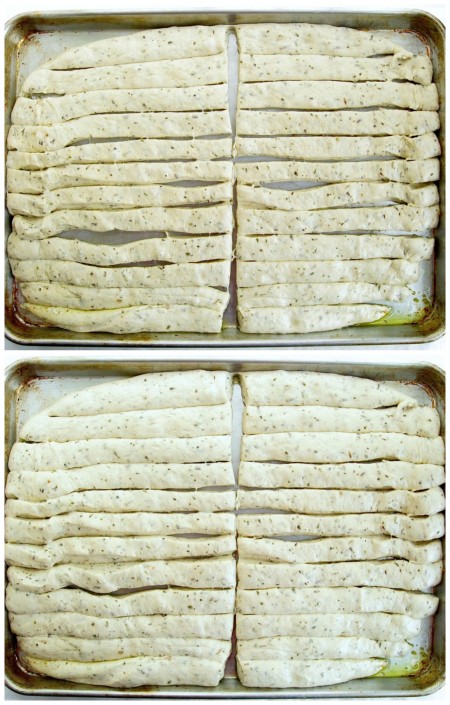
Cover and let the strips rise at room temperature for 45 to 60 minutes, until slightly puffy.
Towards the end of the rising time, preheat the oven to 350°F. Make an egg wash by combining 1 large egg with 1 tablespoon cold water.
Brush the strips with the egg wash, and sprinkle on about 1/4 cup (43g) seeds. I'm using our Artisan Bread Topping – a mixture of flax, toasted sesame, black caraway, midget sunflower, poppy, and anise seeds. It's crunchy, it's pretty, and it adds just the right flavor/texture notes to these soft breadsticks.
Bake the breadsticks for 30 to 35 minutes, until they're light gold.
Remove the pan from the oven. Once the breadsticks are cool enough to handle, cut along their score lines.
Invite someone over. Remember, it's all about sharing...
...and I'm sure you can find someone to share this: soft breadsticks with extra-virgin olive oil and freshly grated Parmesan cheese. Enjoy!
Please read, bake, and review our recipe for Artisan Breadsticks.


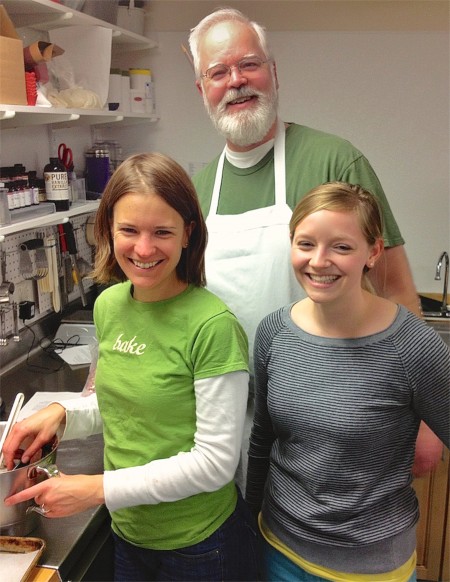
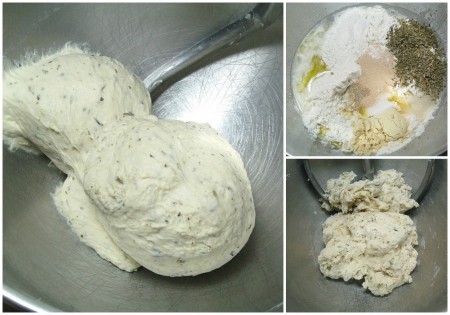
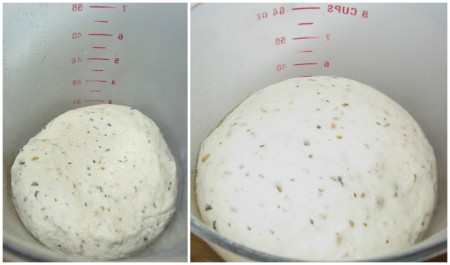
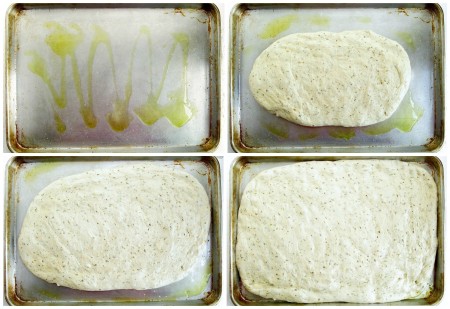
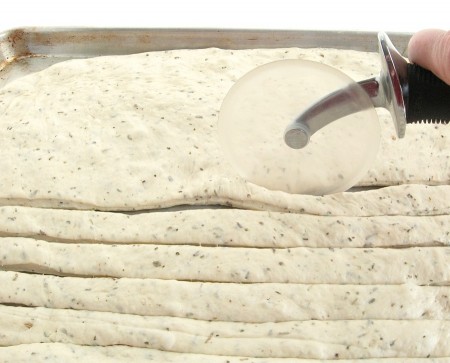
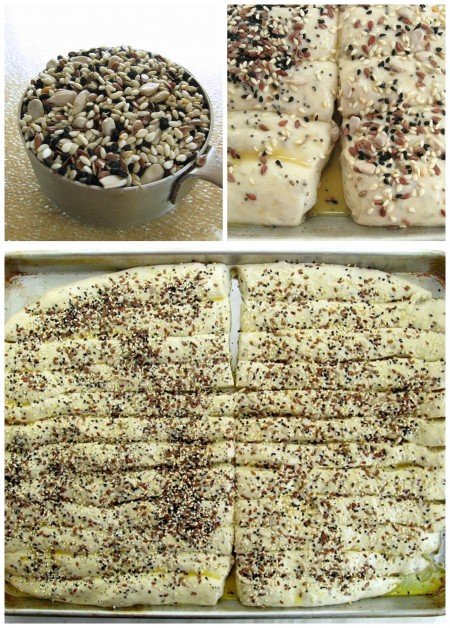
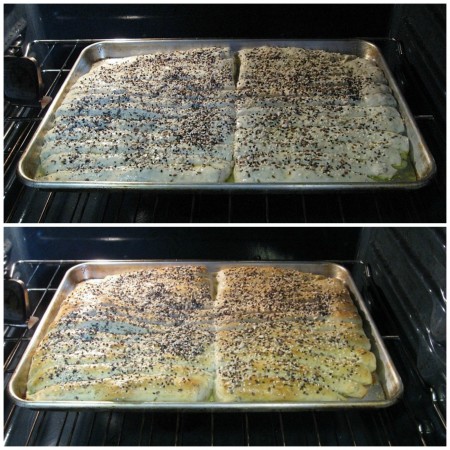
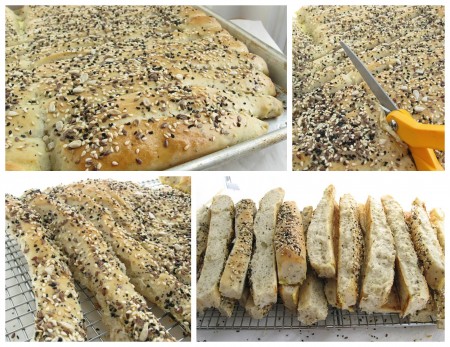
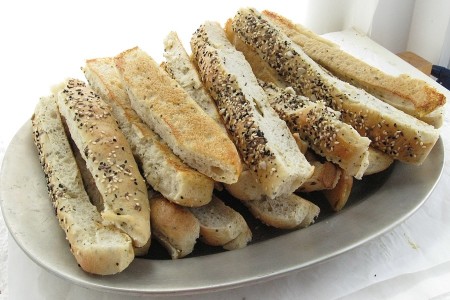
![photo[5]](/sites/default/files/blog-images/2013/04/photo5-450x450.jpg)